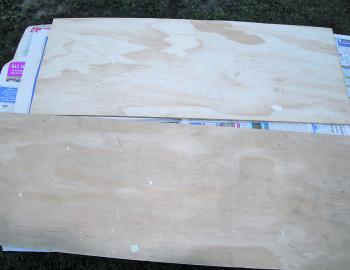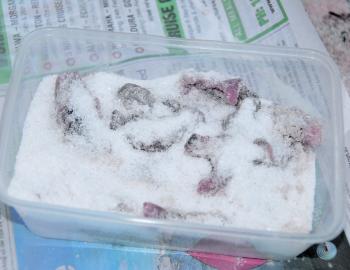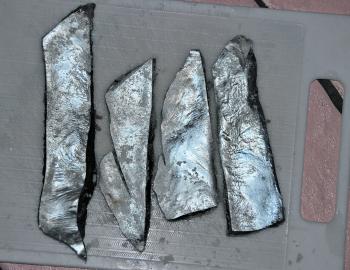It is no surprise to any serious fisher that tuna pieces makes great bait for a variety of species. Anglers use tuna belly flaps to produce teasers for billfishing, tuna chunks for tempting all manner of reef and estuarine species and tuna strips for tailor and mulloway in the surf. Additionally, the heads and frames are excellent crab pot bait.
The reason that the tuna flesh is awesome bait is because of its high blood and oil content. The scent continually leeches out for a long time after it hits the water, bringing fish to the bait from some distance away. The only negative attribute is that tuna flesh is relatively soft, therefore pickers quickly rip it apart.
Bait is fairly expensive these days, but it’s still much easier to grab a few bags on the way to the ramp from the servo, tackle shop or bait shop than to actually gather it yourself. However, if you can spare a little time, then you can easily produce a good supply of prime bait that is tough on the hook and possesses all the flavour and scent of fresh tuna fillets.
By salting down the tuna fillets they will last longer, even without freezing. Additionally, they are a good degree tougher than fresh fillets without losing their fish attracting appeal. This same method can be employed with other baits such as bonito fillets, mullet fillets and pilchards. I have even seen whole squid and even garfish and pike fillets salted down for future trips. With the pelagic season right upon us, there will be plenty of the smaller tunas and bonito to be caught in our bay and offshore areas. Mac tuna, frigate tuna, Australian bonito and Watson’s leaping bonito are all prime candidates for salting.
The salting process removes moisture from the flesh, concentrates the oil and makes the flesh much firmer. The outside colour changes slightly but when it is cut the flesh still possesses that deep rich, red colouration. The big benefit in salting fish is that it prolongs the life. Heavily salted fish will keep for several years in the freezer with virtually no deterioration. In fact, salted tuna can keep with no refrigeration at all for several weeks with virtually no unkind smells emitted if it is just kept cool. Sometimes tuna pieces or fillets are just put in salt alone, although this makes the flesh a lot tougher. When the tuna is layered amongst a good portion of salt in a resealable bucket, the salt and the tuna juices soon combine to make a very strong brine that keeps the tuna good for a long period.
When salting tuna at home for normal fishing, the standard salting method is probably the best. As salted tuna fillets will keep without refrigeration when salted like this, they make ideal baits to take camping or on extended trips where refrigeration is a problem. I mainly use salted tuna for bait fishing applications when chasing bream and reef species or in whole strips when tailor fishing. Sometimes I even salt down previously defrosted pilchards to toughen them and render them useful for future trips, especially those left overs you would normally discard.
You can acquire tuna by either catching them yourself or by purchasing it from your bait supplier or a seafood warehouse. The one I am using here is a mac tuna a little over 6kg that I caught in Moreton Bay. For salting, you can use normal table salt (but not iodised salt) or even coarse salt, however as it is a lot cheaper and of a good consistency, I use swimming pool salt, which is only around $7 for a 10kg bag. I would not recommend swimming pool salt if you’re salting fish for human consumption.
STEPS
1
For this project we will need some newspaper, salt, a whole tuna, a large container and a sharp knife or two. This mack tuna was freshly caught the day before salting so is still fresh. Take the fillets off both side of your tuna and remove any extra flesh bits off the carcass, like the belly flap or other bits you ban pry away. On larger tuna (over 2kg or so) the fillets will be rather thick. You need to remove some of the meat from the flesh side as you want each fillet to be no thicker than 2cm. A long bladed knife will make the task easier and allow you to slice the extra flesh away and leave a fillet with a consistent thickness. We are going to salt all of the flesh however so don’t discard anything.
2
Cut all the flesh into the desired sizes that you want. I generally do strips like these as you can use these whole on a setoff gangs or cut them up further for smaller baits to put on a single hook. Any smaller offcut pieces taken from the tuna after the fillets were cut off can be kept also.
3
Spread out your sheets of newspaper and lay down a bed of salt. Place all the tuna pieces on this with a small space between each. Press each piece in the salt, especially the sides, to ensure the tuna is covered all over with salt.
4
With all the tuna laid out evenly, cover it totally by pouring additional salt over it. You will instantly start to see the moisture being extracted from the flesh as the salt gets wet. I used about 4kg of salt for this batch as a matter of interest.
5
Cover the salted tuna with a few layers of newspaper and then put something on top such as a few boards to hold the newspaper in place and apply some light pressure.
6
After a few hours (or preferably overnight), take the tuna out of the salt bed (don’t bother removing the salt that is still left on the strips) and then wrap each piece in two sheets of newspaper. Stack all of these parcels into a container, preferably one with a lid.
7
The smaller pieces, cubes and offcuts can be put in a put in a small container with some salt. I often dice up the flesh pieces removed when trimming the fillets. These skinless bits can be frozen like this, which will make it quite tough. or you can remove most of the salt after a day or so and just freeze or refrigerate.
8
After refrigerating for 48 hours (or just keeping at room temperature) the main container of wrapped up tuna fillets, the newspaper will be saturated from the moisture extracted from the fillets.
9
Take the parcels out, unwrap and discard the wet newspaper. Your tuna is now ready for use. Any salt that is still on the fillets should be left. In fact, I will often give the fillets an additional coat of salt if I want really tough baits. If you have a cryovac machine, you can portion out the fillets and seal them up. However they will keep well even if you just put them in a normal plastic bag or container. I generally freeze the bags and just use whenever I need them. Even if defrosted they can generally be refrozen with little change to the quality. You will be surprised how good salted tuna is for a host of species. Apart from a little time, a good supply of prime baits will cost you very little.
Reads: 8717












